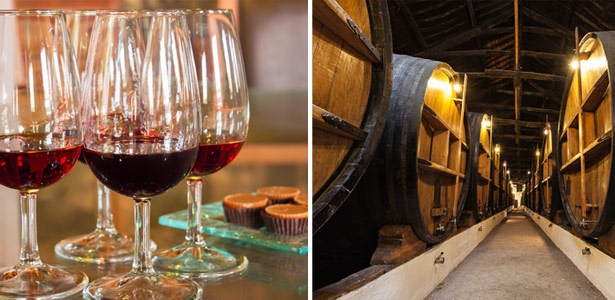With Winter here it’s time to think about warming drinks to keep the chills at bay. People tend to think of fortified wines as only being for sipping after the meal or with a cheese course but that’s just not true. A fortified wine can go with all sorts of food, you just have to take courage and try it out!
What is a fortified wine? It’s one that has been made stronger by the addition of un-aged brandy or wine spirit. We make fantastic versions here in SA and have done for decades – if you ever get the chance to delve around in the cellars at KWV or Nederburg, you’ll know what I mean. There are all kinds of fortified wines but they generally fall into 3 categories – sherry, port and muscadels/jerepigos.
Sherry
First of all – yes, I know we can’t call it sherry any more than we can call it port if it’s made in this country. But for ease of use, let’s use the more familiar terms. Broadly-speaking, there are 2 types of sherry – pale ones made using special yeast to age them and add a salty, yeasty tang to the final wine and others which are darker in colour and have been allowed to oxidise. Both can be bone-dry but generally in SA, most sherries have some sweetness involved. The classic match for sherry is soup, particularly clear, broth-based ones. Try a Monis Medium Cream (R77) with French onion soup – the caramelised onions and tangy Gruyere topping will work wonderfully with the nutty, toffee flavours of the wine. And don’t forget to add a drop to the soup before you serve it for extra flavour.
Port
All ports are sweet but don’t think that that limits them to cheese or dessert. My favourite food pairing for port is generally game meats served with some kind of berry sauce (I love cranberries with ostrich and black cherries with wild duck) but for a more unusual pairing, try this Gemsbok fillet with grape and orange sauce. Good ports – particularly those which have a lot of Touriga Nacional in them – always tend to have distinctive flavours of orange peel and bitter marmalade which makes them a great pairing with this dish. Try the De Krans Cape Vintage 2013 (R89) or any earlier vintage of this SA classic port-style wine.
Muscadels and Jerepigos
Again, these are always going to be sweet since they are made from straight-up grape juice to which alcohol has been added. A Muscadel is always made from Muscat grapes whilst a Jerepigo can also be made from other grapes such as Pinotage or Chenin. These wines are fabulous with desserts but you can also try them with cheese as well – probably best not to stray away from convention here. Try this Goats cheese crostini with fig sauce recipe with Orange River Cellars Red Muscadel (R55) – my advice would be to cook the figs in some of the wine and if you want a really big umami-hit, change the goats cheese for blue.
ALSO READ: Does wine really go with chocolate? Read this to find out

